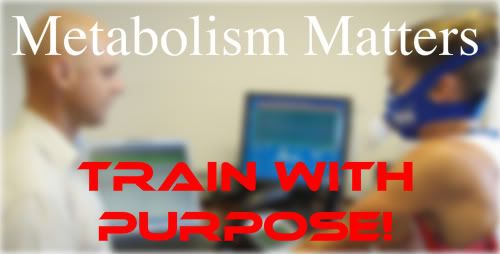Your interval sessions are a valuable tool in improving your VO2max and improving your ability to burn fat as a fuel. Improving your ability to burn fat will improve your performance in cycling as it will allow you to conserve your carbohydrate stores. The more carbohydrate you burn at a particular power output, the less time you will be able to maintain that intensity.
Carbohydrate stores in the body are very limited, whereas fat stores are plentiful. Whilst it is great to be able to produce a lot of power on the bike, if you are burning carbohydrate too fast then your fuel reserves will run low and the unwanted by-products of carbohydrate metabolism will build up. The end result of this will be that your power output will drop significantly and YOU will drop off the back of the bunch. You will then be forced to finish the ride at a lower heart rate (and power output) where your body can rely more on fat as a fuel. I'm sure you have all experienced this scenario before, I know I have.
Worldwide there has been a vast amount of research (good and bad) conducted on the effects of interval training. The interval sessions I prescribe, based on the results of your tests, are derived from the findings that have come from what I consider to be the well conducted research studies. They are in many ways similar to those used by successful athletes around the world. The advantage for you is that your zones have been precisely measured.
The research available has definitely shown us that INTENSITY is extremely important in interval sessions. BOTH the intensity of the EFFORT INTERVAL, as well as the intensity of the REST INTERVAL, needs to be considered when planning your interval sessions. It is also important to use a variety of interval sessions to enhance the physiological effects of training. If you continually use the same interval session you will reach a plateau.
With regard to intensity it is important to consider the following:
- EFFORT INTERVAL: should be done at the highest intensity that you can sustain for that time. By the end of the time period you should be exhausted and unable to maintain that intensity any longer.
- REST INTERVAL: it is important to get your heart rate back into your prescribed zone as quickly as possible. Then you maintain your heart rate in that zone for the remainder of the rest period. The rest period may seem long but this is necessary to enable you to perform better during the EFFORT INTERVAL and optimise the physiological response to your interval training.
Do some of your intervals on hills and some on the flat, or if you are using a windtrainer vary the resistance. Concentrate also on good technique and ensure that you maintain good timing with muscle activation using all the appropriate muscle groups. If you are also a runner then do some of your intervals running. Generally you will find you can get your heart rate up faster and higher with running and it is another great way to add some variety.







